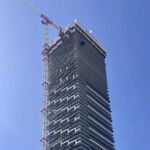I can't easily access TTC offense rates from over a decade ago, but I can use the info from the last CEO's Report:
View attachment 539928
Clearly there was a substantial uptick from 2017-2019; through the pandemic. But if you look at the Nov '23 numbers, you're back down to the Q1 2020 rates, and the trendline seems favourable.
***
TPS Data Analytics only goes back 5 years, but this is the assault numbers (YTD) tracked over that period:
View attachment 539929
If we apply a population growth factor of 400,000 (80,000 per year) that seems reasonable to me. *
So, we would assume Toronto were 2,800,000 pre-pandemic and closer 3,200,000 today.
That gives a 2020 Assault rate of 68.2 per 100,000
That gives a 2024 Assault rate of 73.2 per 100,000
A definite increase but I wouldn't suggest it was a large one.
* The population numbers are a bit opaque, I would note if you chose to add another 200,000 in growth, the rate of assaults would be flat.
















